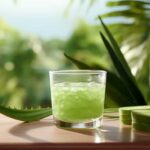Juice Tips and Tricks
How Much Juice In A Orange

As someone who likes to kickstart their day with a refreshing glass of orange juice, I have always been curious about how much juice can be squeezed from one orange. It is crucial to understand that oranges can differ greatly in their juice yield – some are naturally juicier than others, affected by various factors that can affect the amount of juice that can be extracted.
In this article, I’ll delve into the science behind orange juice content and provide some tips on how to get the most juice out of your oranges.
Firstly, it’s important to understand that the amount of juice in an orange can vary depending on several factors, such as the variety of orange, its ripeness, and the conditions in which it was grown. Additionally, the way you extract the juice can also impact the amount you get.
By exploring these factors, we can gain a deeper understanding of how to get the most juice out of our oranges and make the most out of this delicious fruit.
So, let’s dive in and uncover the secrets of the orange!
Key Takeaways
- Orange juice content varies based on the variety, ripeness, and growing conditions.
- Valencia and blood oranges have higher juice content compared to Navel oranges, which have thicker skin and lower juice content.
- Rolling the orange and using a citrus press or mesh strainer can increase juice yield, with a medium orange yielding 1/3 cup and a large orange yielding up to 1/2 cup.
- Juicing removes some nutrients and fiber, and oranges are a good source of vitamin C, fiber, potassium, folate, and hesperidin, with potential health benefits such as reducing the risk of heart disease and lowering cholesterol levels.
Factors that Affect Juice Content
You’ll want to know what factors affect the juice content of an orange. After all, who wouldn’t want to maximize the juice yield when squeezing fresh oranges for a morning glass of OJ?
Well, one of the primary factors affecting juiciness is the variety of orange. Some varieties, such as Valencia and blood oranges, are known for their high juice content, while others like navel oranges tend to be less juicy.
But it’s not just about the type of orange. Other factors that can impact juice content include the age of the fruit, the region it was grown in, and the amount of rainfall it received during the growing season. For example, oranges grown in dry regions with consistent sunshine tend to have lower juice content than those grown in more temperate, humid climates.
With these factors in mind, it’s important to choose the right type of orange for your juicing needs. Now, let’s explore the different types of oranges and their unique characteristics.
Types of Oranges
The tangy taste of tangerines tantalizes the taste buds. Oranges come in various types, each with unique characteristics, from flavor to size and color. Here are four varieties of oranges that you may encounter in the market, each with its specific cultivation techniques and juice content.
-
Navel Oranges: These are the most common type of orange in the United States. They get their name from the small, navel-like formation on their blossom end. Navel oranges have thicker skin, which makes them easier to peel, and they are seedless. They’re also known for their high juice content, making them an excellent choice for juicing.
-
Valencia Oranges: These oranges are the most commonly grown type worldwide. They have thin skin and are smaller than navel oranges. Valencia oranges are sweet and juicy, and they’re often used for juicing because of their high juice content.
-
Blood Oranges: These oranges are smaller than navel oranges and have a distinctive red color. They get their name from the bright red color of their flesh, which is due to the presence of anthocyanin, a type of antioxidant. Blood oranges have a unique flavor, which is slightly tart. They’re also high in juice content, making them ideal for juicing.
-
Seville Oranges: These oranges are bitter and sour, and they’re rarely eaten fresh. Instead, they’re primarily used for making marmalade and other preserves. Seville oranges have a high pectin content, which makes them ideal for making jams and jellies. They also have high juice content, but their sour flavor makes them less desirable for juicing.
As we’ve seen, different types of oranges have varying characteristics, including their cultivation techniques and juice content.
In the next section, we’ll delve deeper into the juice content of different types of oranges.
Juice Content of Different Types of Oranges
One may be surprised to learn that the juice content of Valencia oranges is higher than that of navel oranges. According to my research, Valencia oranges have an average juice content of 53.5%, while navel oranges have an average juice content of 45.5%. However, it is important to note that the juice content of oranges can vary depending on the specific variety and the juicing technique used. Moreover, the juice content of a navel orange tends to be lower due to its thicker skin and slightly more fibrous texture. In contrast, Valencia oranges are known for their thinner skin and higher pulp-to-rind ratio, which contributes to their superior juiciness. These differences highlight the importance of selecting the right type of orange based on one’s juicing preferences.
To better understand the juice content of different orange varieties, I have created a table below comparing the juice content of Valencia and navel oranges:
| Orange Variety | Juice Content |
|---|---|
| Valencia | 53.5% |
| Navel | 45.5% |
As shown in the table, Valencia oranges have a higher juice content compared to navel oranges. However, this does not necessarily mean that Valencia oranges are always the better choice for juicing. Other factors such as taste preference and availability should also be considered when choosing an orange for juicing.
Moving forward, it is important to consider the best techniques for extracting the most juice from oranges. These tips will be discussed in the next section.
Tips for Getting the Most Juice Out of Oranges
Maximizing the potential of your citrus fruit can be achieved by implementing certain strategies that are known to increase yield. To get the most juice out of an orange, it’s important to use the right orange squeezing techniques.
One effective technique is to roll the orange on a hard surface before squeezing. This helps to break down the membranes inside the fruit, allowing the juice to flow more freely. Another helpful tip is to use your hands to apply pressure evenly on different parts of the orange while squeezing.
Aside from using traditional juicers, there are also alternative methods to extract juice from oranges. For example, using a citrus press can be effective in extracting more juice than simply squeezing the fruit with your hands. Additionally, using a mesh strainer can help to remove any pulp or seeds that may be present in the juice.
By implementing these tips and utilizing different juicer alternatives, you can get the most juice out of your oranges and enjoy the full flavor and nutritional benefits they have to offer.
Moving on to the next section, let’s explore how to calculate the amount of juice in an orange.
How to Calculate the Amount of Juice in an Orange
To accurately measure the liquid content of an orange, it’s helpful to cut the fruit in half and use a juicer or press to extract the liquid.
Calculating juice yield requires measuring the orange size, determining the weight of the fruit, and then extracting the juice to determine the volume of liquid produced.
The amount of juice in an orange can vary depending on the size of the fruit and its ripeness. On average, a medium-sized orange contains approximately 1/3 cup of juice, while a large orange can yield up to 1/2 cup of juice.
By accurately measuring the amount of juice in an orange, you can ensure that you have enough liquid for recipes or for drinking.
Now, let’s explore other uses for oranges.
Other Uses for Oranges
You can do more with oranges than just eating them, like adding a burst of sunshine to your morning smoothie or using the zest to add a zing of flavor to your cooking, like a pinch of salt to a dish.
Oranges are a versatile fruit that can be used in many recipes, from sweet to savory. For example, you can use freshly squeezed orange juice in marinades for meats or seafood, or in salad dressings for a tangy flavor. The zest of an orange can be used to flavor cakes, cookies, and even cocktails.
In addition to their delicious taste and versatility in the kitchen, oranges also provide numerous health benefits. They’re a great source of vitamin C, which is essential for a healthy immune system and can also help with the absorption of iron. Oranges also contain fiber, which can help with digestion and keep you feeling full longer.
So next time you’re in the grocery store, consider picking up a bag of oranges to add some variety to your meals and improve your health.
Did you know that oranges were first cultivated in China over 4,500 years ago? Or that they’re the largest citrus crop in the world? These interesting facts about oranges and more will be explored in the following section.
Interesting Facts About Oranges
I find it fascinating to discuss the historical significance of oranges, as this fruit has played an important role in human history. Oranges have also made their way into popular culture, appearing in movies, songs, and literature.
Additionally, there are many fun facts about oranges. For example, they’re not always orange in color and they can grow on both trees and shrubs.
Historical Significance of Oranges
The humble orange has played a significant role in history, from its origins in Southeast Asia to its widespread cultivation and trade throughout the world. The citrus trade, which began in the 12th century, brought oranges to Europe, where they were initially grown for medicinal purposes. As orange cultivation techniques improved, the fruit became more widely available and was eventually used for culinary purposes.
To understand the impact of oranges, it’s helpful to consider some data. Below is a table showcasing the top orange-producing countries in the world, as of 2020:
| Rank | Country | Production (in metric tons) |
|---|---|---|
| 1 | Brazil | 17,000,000 |
| 2 | China | 12,000,000 |
| 3 | India | 9,500,000 |
The historical significance of oranges is undeniable, but their impact on popular culture is just as noteworthy. Without giving away too much, let’s just say that oranges have found their way into countless songs, films, and TV shows.
Oranges in Popular Culture
From the iconic opening scene of The Godfather to the famous Orange Crush soda commercials, oranges have become a ubiquitous symbol in popular culture.
Oranges have been used in movies and literature to convey a range of emotions and themes, from joy and happiness to death and destruction. In The Godfather, the oranges that fall to the ground foreshadow the impending death of the character played by Marlon Brando. Similarly, in the novel One Hundred Years of Solitude by Gabriel Garcia Marquez, oranges are used as a symbol of love and passion.
Oranges have also been used in advertising, with the Orange Crush soda commercials featuring the slogan ‘Crush it!’ and showing images of oranges being crushed to make the drink. Oranges have also been used as a symbol of health and vitality, with advertisements for orange juice emphasizing the vitamin C content and the health benefits of consuming oranges.
Overall, oranges have become an important part of popular culture and continue to be used in a variety of ways to convey different messages and meanings.
As we move on to the next section about fun facts about oranges, it’s important to note that oranges have played an important role not just in pop culture, but also in history and agriculture. From their origins as a hybrid fruit in Southeast Asia to their widespread cultivation around the world, oranges have a rich and fascinating history.
Fun Facts About Oranges
Did you know that oranges are a great source of nutrition? One medium-sized orange contains about 70mg of vitamin C, which is more than the recommended daily intake for adults. Oranges are also rich in fiber, potassium, and folate, making them a healthy addition to any diet.
Aside from being a great snack, oranges are also versatile in the kitchen. They can be used in a variety of recipes, from salads to desserts. Some popular orange recipes include orange chicken, orange marmalade, and orange sorbet. With their sweet and tangy flavor, oranges can add a burst of freshness to any dish.
Speaking of oranges, there are some common myths about them that are simply not true. For example, some people believe that eating too many oranges can cause heartburn, but in reality, oranges are not acidic enough to cause any discomfort.
In the next section, I will debunk some more myths about oranges.
Common Orange Myths Debunked
You might be surprised to learn that some of the most popular beliefs about oranges are actually myths. For example, thinking that squeezing an orange will give you a glass of juice with the same amount of Vitamin C as eating the whole fruit is not accurate. In fact, the process of juicing removes some of the nutrients and fiber found in oranges.
Additionally, the amount of juice you can get from one orange can vary depending on the size and ripeness of the fruit. On average, one medium-sized orange can yield about 1/3 to 1/2 cup of juice. To further debunk some myths about orange nutrition, here are three surprising health benefits of oranges that you may not know:
- Oranges are a good source of potassium, which can help lower blood pressure.
- Oranges contain hesperidin, a flavonoid that has anti-inflammatory and antioxidant properties.
- Eating oranges may reduce the risk of heart disease, as they are high in fiber and have been shown to lower cholesterol levels.
So, next time you reach for a glass of orange juice, remember that the whole fruit is always the better choice for overall nutrition and health benefits.
Frequently Asked Questions
What is the nutritional value of orange juice?
As a nutritionist, I highly recommend incorporating orange juice into your daily diet due to its numerous benefits. Varieties such as freshly squeezed or fortified with calcium offer essential vitamins and minerals, including vitamin C and potassium.
How long does it take for an orange to produce juice?
Squeezing an orange by hand produces juice in seconds, but commercial juice extraction methods may take longer. Factors such as fruit maturity, temperature, and processing equipment can affect orange juice yield.
Can you use frozen oranges to make juice?
Yes, frozen oranges can be used to make juice. However, the juicing techniques may differ from fresh oranges. It is important to thaw the oranges first and consider the impact on taste and texture.
What is the best way to store oranges to maximize juice content?
To maximize juice content, storing oranges in the refrigerator is best. Rolling them on a hard surface before juicing can also increase yield. Using a citrus juicer is the most efficient technique for extracting juice.
Is it better to hand-squeeze oranges or use a juicer for maximum juice yield?
To achieve maximum yield, juicing oranges is more efficient than hand squeezing. Studies show that juicers can extract up to 20% more juice than manual squeezing, resulting in a higher yield and less waste.
Conclusion
In conclusion, the amount of juice in an orange can vary depending on several factors such as the type of orange, its ripeness, and the method used to extract the juice. Valencia oranges are known to have the highest juice content, while blood oranges have a lower juice content due to their pigmentation. To get the most juice out of an orange, it’s recommended to roll it on a hard surface before squeezing it, and to use a citrus juicer if possible.
Interestingly, oranges have many uses beyond just being a source of juice. They can be used in cooking, as a natural air freshener, and even as a cleaning solution. Oranges are also a great source of vitamin C and other important nutrients.
So next time you enjoy a glass of orange juice or snack on a juicy orange, remember all the hidden benefits and uses of this versatile fruit.
Cindy thoroughly researches juicing trends, techniques, and recipes to provide readers with practical advice and inspiration. Her writing style is accessible, engaging, and designed to make complex concepts easy to understand. Cindy’s dedication to promoting the advantages of juicing shines through her work, empowering readers to make positive changes in their lives through the simple act of juicing.
Juice Tips and Tricks
How to Make Aloe Vera Juice Taste Better

Tired of the strong flavor of aloe vera juice? No problem, we’ve got the answer for you.
In this article, we’ll share some tips and tricks to make your aloe vera juice taste better. We have tried and tested various methods to enhance the flavor without compromising the health benefits.
From choosing the right juice to adding natural sweeteners and infusing with fruits and herbs, we’ve got all the information you need to transform your aloe vera juice into a delightful and refreshing beverage.
Let’s dive in!
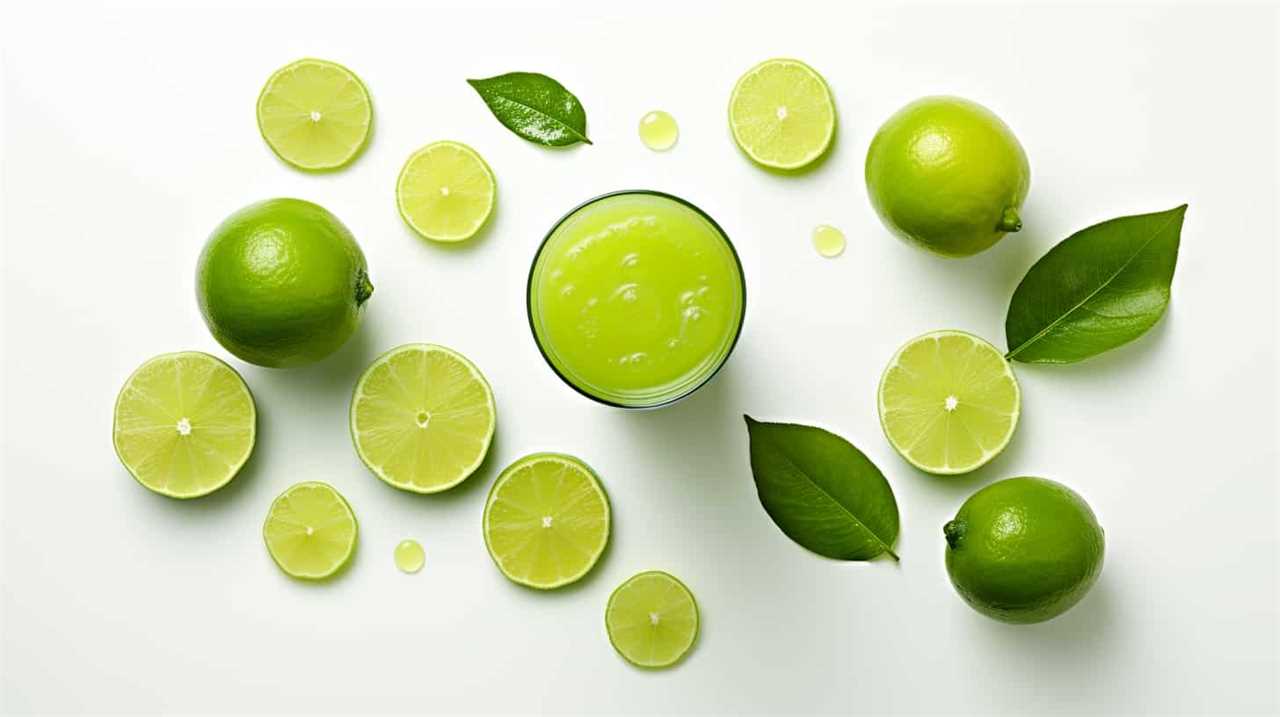
Key Takeaways
- Choose a reputable brand of aloe vera juice that prioritizes quality and uses organic, pure aloe vera.
- Avoid brands that contain added sugars or artificial ingredients.
- Use natural sweeteners like honey, agave syrup, or stevia to enhance the taste of aloe vera juice.
- Experiment with adding fruits, herbs, and other juices to create unique flavor combinations and enhance the health benefits of aloe vera juice.
Choosing the Right Aloe Vera Juice
We can enhance our experience with aloe vera juice by selecting the right brand and type for our preferences. When it comes to finding a reputable brand, it’s important to do some research and read reviews from other consumers. Look for brands that prioritize quality and use organic, pure aloe vera without any added sugars or artificial ingredients. Understanding the health benefits of aloe vera juice is also crucial in making the right choice. Aloe vera is known for its soothing properties, aiding digestion, promoting skin health, and boosting the immune system. By choosing a high-quality brand, we can ensure that we’re getting the maximum benefits from our aloe vera juice.
Now that we know how to choose the right brand, let’s move on to the next step of adding natural sweeteners.
Adding Natural Sweeteners
To enhance the flavor of our aloe vera juice, we can add natural sweeteners such as honey or agave syrup. Using alternative sweeteners not only adds sweetness but also brings unique flavors to the juice. Here are some options to consider:
- Stevia: A natural sweetener derived from the Stevia plant, it’s a zero-calorie alternative to sugar.
- Maple Syrup: This natural sweetener adds a rich and earthy flavor to the aloe vera juice.
- Dates: Pureed dates can be used to sweeten the juice while also providing essential nutrients like fiber.
In addition to using alternative sweeteners, we can enhance the flavor of aloe vera juice by adding spices and extracts. Cinnamon, ginger, or vanilla extract can add warmth and depth to the taste. By experimenting with different combinations of these natural sweeteners, spices, and extracts, we can create a flavor profile that suits our preferences.

Now, let’s move on to the next section and learn how to infuse aloe vera juice with fruits and herbs to further enhance its taste.
Infusing With Fruits and Herbs
As we explore ways to make our aloe vera juice taste better, one option to consider is infusing it with fruits and herbs. Creating unique aloe vera blends by adding fruits and herbs not only enhances the flavor but also adds a touch of freshness and complexity to the juice. For example, combining aloe vera juice with lemon, mint, or berries can create a refreshing drink that’s both delicious and packed with additional nutrients. It’s similar to the ease of making lemonade with bottled juice—quick, convenient, and customizable to suit your preferences. By experimenting with different fruit and herb combinations, you can elevate your aloe vera juice experience while still reaping its health benefits.
Fruits like strawberries, pineapple, or citrus can add a burst of sweetness, while herbs like mint, basil, or ginger can provide a subtle yet refreshing twist. Exploring the benefits of herbal infusions can also be beneficial for our health. For example, adding a few sprigs of lavender can promote relaxation and reduce stress. Additionally, infusing aloe vera juice with rosemary can aid digestion and boost the immune system.
Blending With Other Juices
Let’s try mixing aloe vera juice with different fruit juices to create delicious and refreshing blends. Blending aloe vera juice with other fruits not only enhances its taste but also adds nutritional benefits to your drink. Here are three fruit juices that you can mix with aloe vera juice:

- Orange juice: Combining aloe vera juice with orange juice not only adds a tangy flavor but also boosts your intake of vitamin C, which is essential for a strong immune system.
- Pineapple juice: Mixing aloe vera juice with pineapple juice creates a tropical blend that isn’t only refreshing but also helps in digestion. Pineapple contains bromelain, an enzyme that aids in breaking down proteins and promoting better digestion.
- Watermelon juice: Blending aloe vera juice with watermelon juice creates a hydrating and refreshing combination. Watermelon is rich in water content and contains electrolytes that can help replenish your body’s fluids.
Experimenting With Flavor Combinations
While we can try various flavor combinations with aloe vera juice, it’s important to find the right balance to enhance its taste. Experimenting with different flavors can’t only make the juice more enjoyable but also enhance its health benefits.
Aloe vera juice is known for its numerous health benefits, such as boosting digestion, promoting hydration, and supporting the immune system. By adding complementary flavors, we can create a refreshing summer drink that not only tastes great but also provides a nutritional boost.
Some popular flavor combinations include mixing aloe vera juice with citrus fruits like lemon or orange, adding a splash of coconut water for a tropical twist, or combining it with cucumber and mint for a refreshing and cooling effect.
Don’t be afraid to get creative and find the flavor combination that suits your taste buds best!
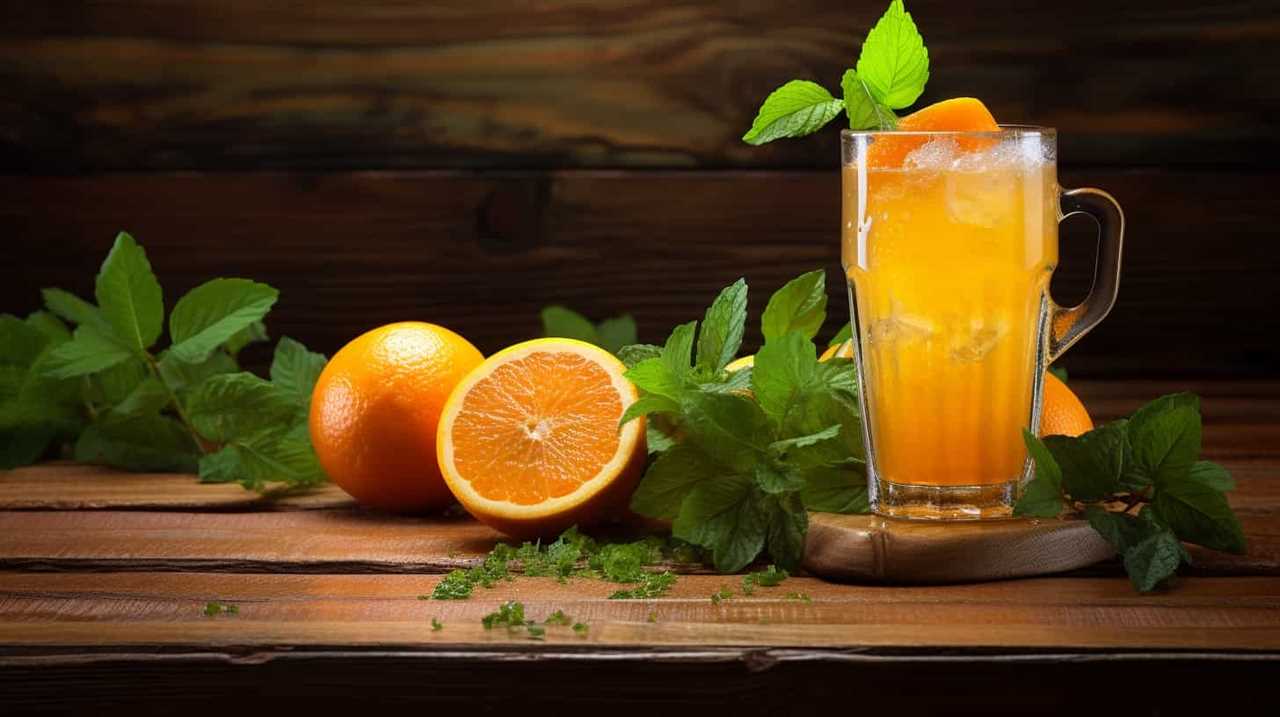
Frequently Asked Questions
Can I Use Store-Bought Aloe Vera Gel Instead of Fresh Aloe Vera for Making Juice?
Yes, you can use store-bought aloe vera gel instead of fresh aloe vera for making juice. However, it’s important to note that fresh aloe vera juice may have more health benefits due to its higher nutrient content.
How Long Can I Store Aloe Vera Juice in the Refrigerator?
Aloe vera juice can be stored in the refrigerator for up to a week. Refrigeration helps maintain the longevity and freshness of the juice, preserving its beneficial properties. It’s important to store the juice in an airtight container to prevent contamination and maintain its quality. Similarly, you might wonder *how long ginger juice lasts*; typically, fresh ginger juice can be refrigerated for about 1–2 weeks as well. Both aloe vera and ginger juices are best consumed within their shelf life to ensure maximum potency and health benefits. Additionally, freezing either juice can extend their shelf life, though some loss of nutrients and potency may occur during the process. When thinking about *how long fresh juice lasts*, it’s crucial to check for signs of spoilage, such as changes in smell, taste, or color, before consuming. To enjoy the best results, it’s always recommended to use fresh ingredients and properly store the juice to ensure you’re getting the most out of its health benefits.
Can Aloe Vera Juice Help With Digestive Issues?
Aloe vera juice can potentially help with digestive issues when taken in appropriate dosages. However, it is important to note that there may be potential side effects. It is always best to consult with a healthcare professional before starting any new supplement regimen.
Can I Use Artificial Sweeteners Instead of Natural Sweeteners in My Aloe Vera Juice?
Using artificial sweeteners in aloe vera juice may affect its taste and potential health benefits. However, natural sweeteners like honey or stevia can enhance the flavor without compromising its nutritional value.

Is It Safe to Drink Aloe Vera Juice Every Day?
Drinking aloe vera juice daily can have numerous benefits, such as improving digestion and boosting the immune system. However, consuming it regularly may also lead to potential side effects like diarrhea or stomach cramps.
Conclusion
In conclusion, making aloe vera juice taste better is easy and enjoyable.
By choosing the right aloe vera juice and adding natural sweeteners, infusing with fruits and herbs, blending with other juices, and experimenting with flavor combinations, you can create a delightful and refreshing drink.
So go ahead and unleash your creativity in the kitchen, and transform your aloe vera juice into a sensational elixir that will transport your taste buds to paradise.
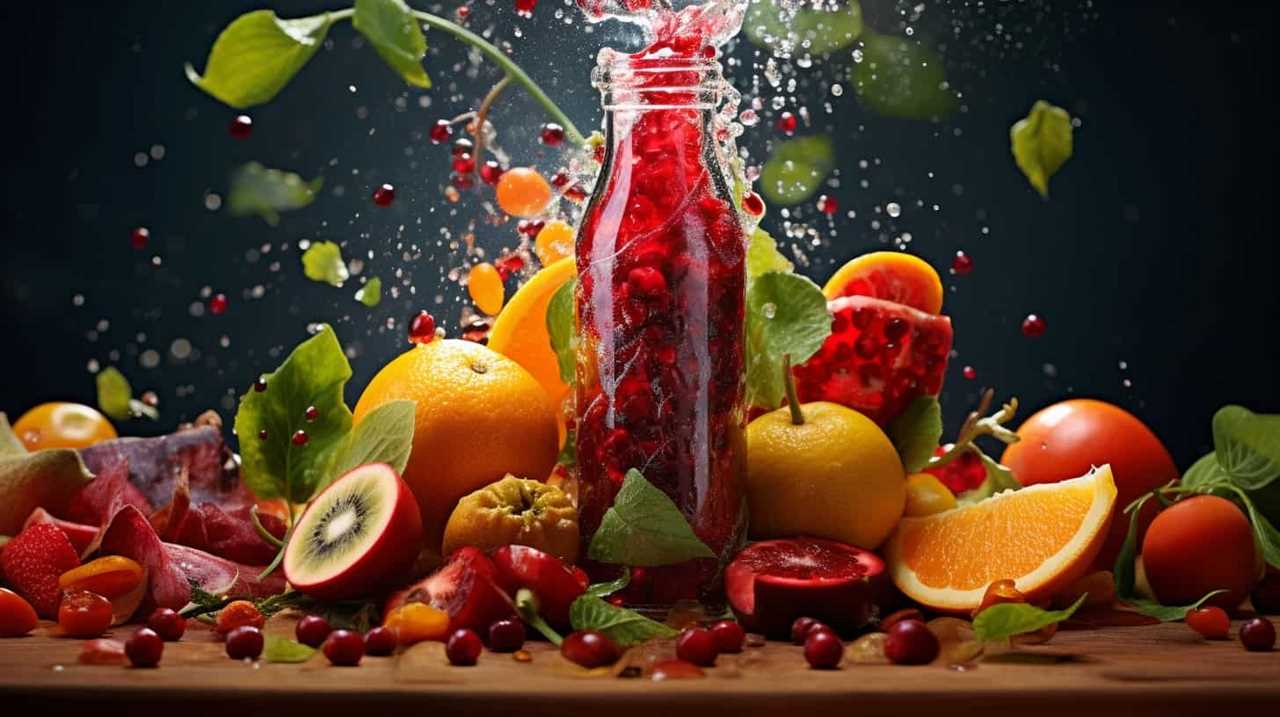
Susannah expertise lies in researching and compiling evidence-based content on juicing, nutrition, and overall health. She is committed to ensuring that The Juicery World offers accurate, up-to-date, and trustworthy information to empower readers to take control of their health. Susannah’s goal is to inspire individuals to embrace juicing as a way to nourish their bodies and live their best lives.
Juice Tips and Tricks
How to Make a Glass of Lemonade With Bottled Lemon Juice

Are you craving a cool glass of lemonade to quench your thirst? Look no further! Try out our perfect recipe using bottled lemon juice that will surely please your taste buds.
In this article, we’ll guide you through the process of creating a tangy and sweet concoction that will leave you feeling refreshed and satisfied.
So grab your ingredients and let’s get started on this delightful journey of serving ourselves and others a glass of pure lemony goodness.
Key Takeaways
- Consider the storage of the bottled lemon juice (dark glass or plastic bottles, protect from light exposure, check expiration date)
- Choose a suitable pitcher and fresh lemons for enhanced flavor
- Store the lemonade concentrate in the refrigerator to maintain freshness
- Adjust the sweetness and tartness to taste with sugar or more lemon juice, and experiment with different sweeteners or additional flavors.
Choosing the Right Bottled Lemon Juice
What are the key factors we should consider when selecting the right bottled lemon juice for our lemonade?

One important factor is how the lemon juice is stored. Look for bottles that are made of dark glass or plastic, as they help protect the juice from light exposure, which can degrade its quality. It’s also important to check the expiration date to ensure freshness.
Another benefit of using bottled lemon juice is convenience. It saves time and effort compared to squeezing fresh lemons. Additionally, bottled lemon juice provides consistent flavor, as the acidity levels are standardized.
When selecting a brand, consider reading reviews and checking for certifications, such as organic or non-GMO.
Gathering the Necessary Ingredients and Tools
How can we gather all the necessary ingredients and tools to make a glass of lemonade with bottled lemon juice? First, we’ll need to collect bottled lemon juice, sugar, and cold water, as well as a pitcher and a spoon for mixing. If you prefer extra flavor, you can also gather ice and optional add-ins like mint or soda water. While preparing the lemonade, it’s easy to understand why some people wonder about other citrus drinks and may ask, “how many oranges per gallon” are needed when making orange juice instead. Once everything is assembled, combine the lemon juice, sugar, and water in the pitcher, stirring until the sugar dissolves. Feel free to adjust the sweetness or tartness to your liking, and don’t forget to add ice or any optional add-ins for an extra refreshing touch. This process might even make you curious about how much juice from oranges is needed when making fresh orange juice compared to using bottled citrus products. Once your lemonade is ready, pour it into a glass and enjoy the refreshing taste. This simple recipe can inspire you to try other homemade juices, such as learning **how to make pear juice** or experimenting with other fruit combinations. Whether you’re using fresh fruits or bottled options, creating your own beverages is a fun and rewarding way to personalize your drinks.
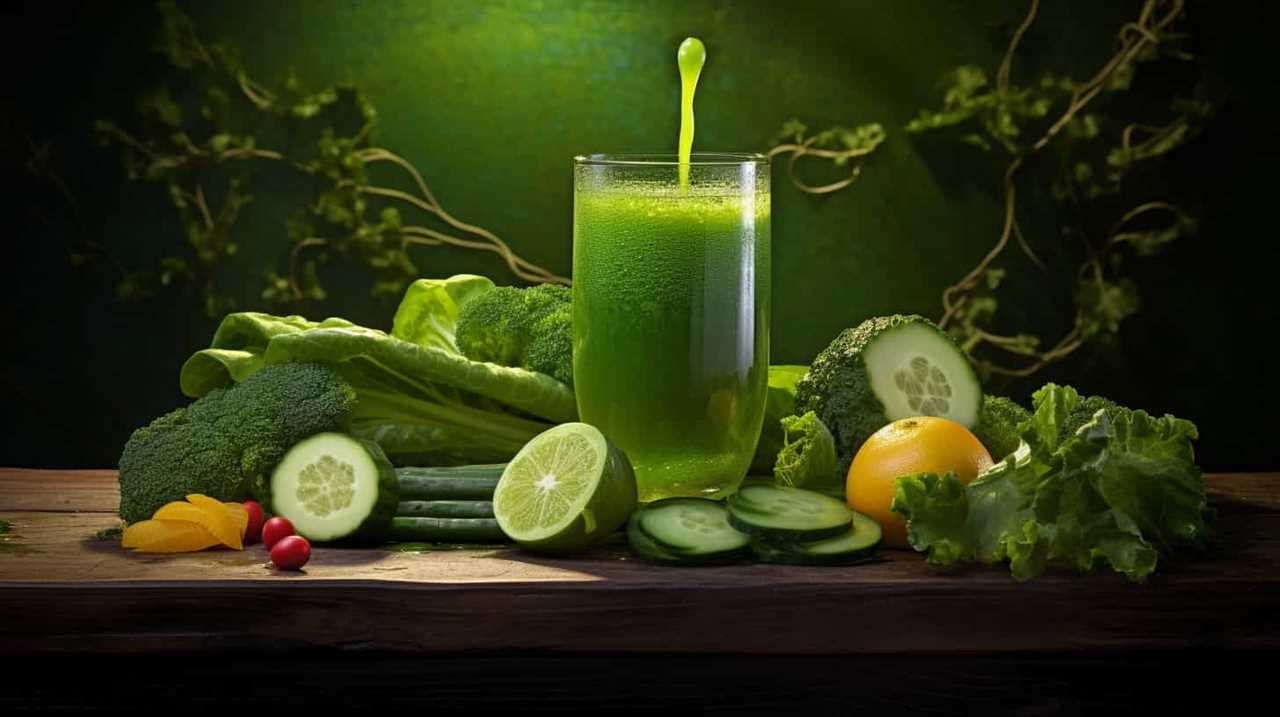
It’s important to start with the right pitcher. Look for a pitcher that’s made of glass or BPA-free plastic, as these materials won’t affect the taste of the lemonade. The pitcher should also have a lid or cover to keep the lemonade fresh and prevent spills.
Now, let’s talk about the lemons. While bottled lemon juice is convenient, using fresh lemons instead can elevate the flavor of your lemonade. Choose lemons that are firm and have a bright yellow color. Give them a gentle squeeze to ensure they’re juicy. To extract the juice, you’ll need a citrus juicer or a reamer. These tools make it easy to get every last drop of juice from the lemons.
Mixing the Lemonade Concentrate
To start mixing the lemonade concentrate, we’ll slowly pour the bottled lemon juice into the pitcher. It’s important to choose the right container for the lemonade concentrate. A pitcher with a lid or a tightly sealed container will help maintain the freshness and prevent any spills or leaks. Once the lemon juice is in the pitcher, we can move on to the next step of adding water and sweetener.
To ensure the lemonade concentrate stays fresh, it’s essential to store it properly. Keep the pitcher in the refrigerator to maintain its cool temperature and prevent any bacteria growth. If you have any leftover concentrate, transfer it to a smaller container with an airtight lid before refrigerating. This will help retain its flavor and prevent any contamination.
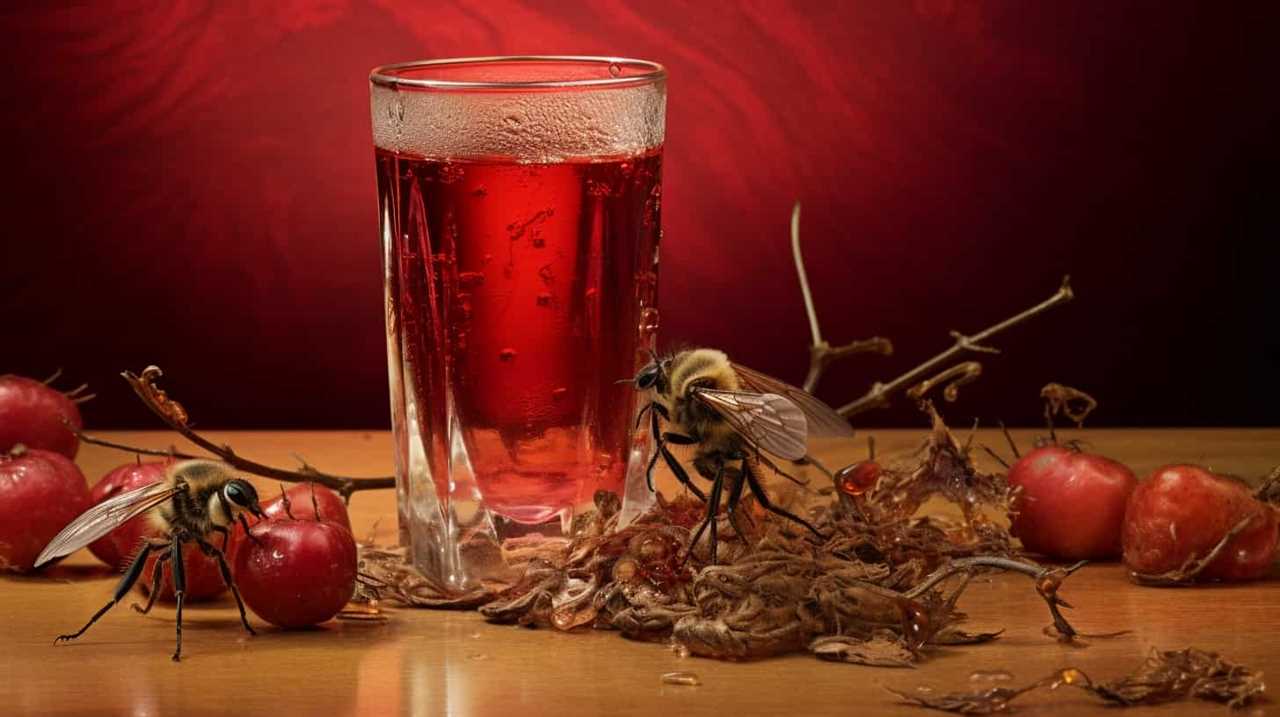
Now that we’ve mixed the lemonade concentrate, it’s time to adjust the sweetness and tartness to taste.
Adjusting the Sweetness and Tartness to Taste
We can adjust the sweetness and tartness of the lemonade to taste by adding more sugar or lemon juice, respectively. If you prefer a sweeter lemonade, simply add more sugar and stir until it dissolves completely. You can experiment with different sweeteners such as honey or agave syrup to find the perfect balance of sweetness.
On the other hand, if you want a tangier lemonade, add more lemon juice gradually, tasting as you go until it reaches your desired level of tartness.
Additionally, you can get creative with your lemonade by adding flavors like fresh mint leaves or a hint of lavender. These additions can elevate the flavor profile and create a more refreshing and unique experience.
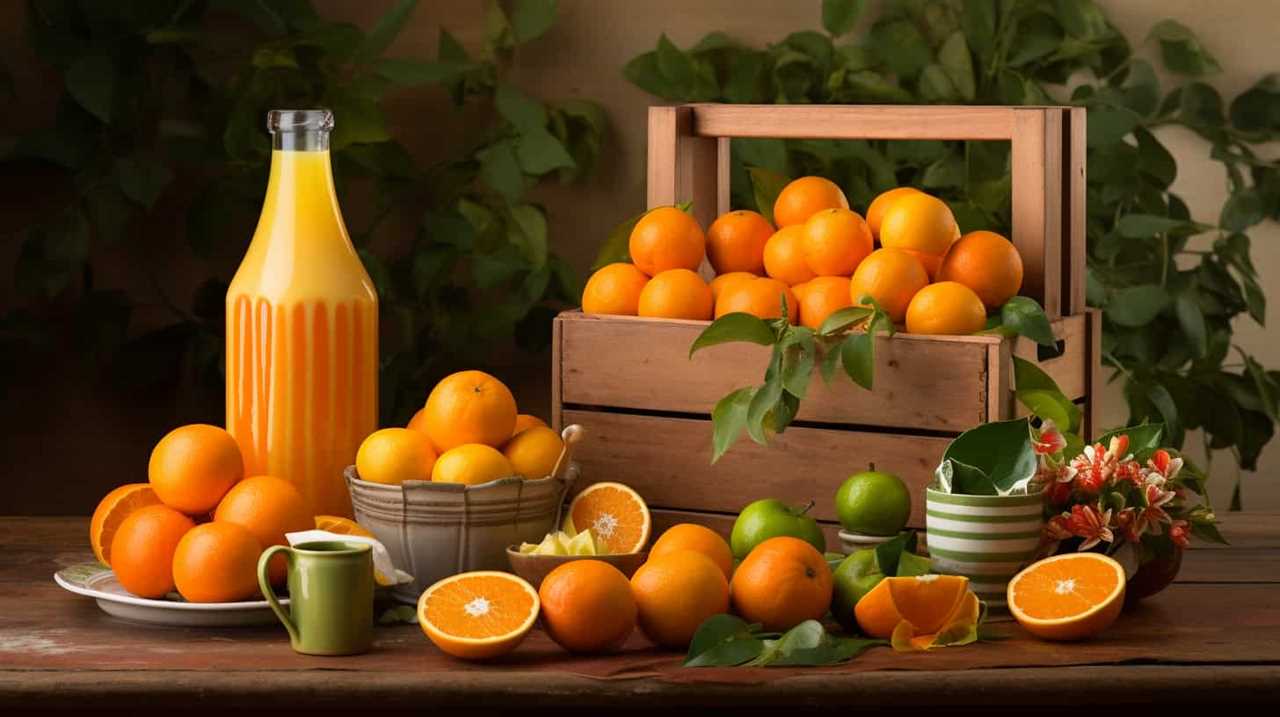
Now that we’ve adjusted the sweetness and tartness of our lemonade, let’s move on to serving and enjoying your refreshing glass of lemonade.
Serving and Enjoying Your Refreshing Glass of Lemonade
Now let’s sit back, relax, and savor our refreshing glass of lemonade.
When it comes to serving and enjoying this delightful drink, there are a few techniques and garnishing options to consider.
Firstly, serving your lemonade chilled is essential for maximum enjoyment. Ensure that you have chilled glasses or add ice cubes to the glasses before pouring the lemonade.

To add a touch of elegance, you can garnish your lemonade with a slice of lemon on the rim of the glass. For an extra burst of flavor, you could also add a sprig of fresh mint or a few berries.
Remember to gently stir the lemonade before serving to evenly distribute the flavors.
Now, take a sip, feel the refreshing tang of lemon, and let the sweet and tart flavors dance on your taste buds.
Cheers!

Frequently Asked Questions
Can I Use Fresh Lemons Instead of Bottled Lemon Juice?
Fresh lemons offer numerous benefits over bottled lemon juice. The taste of fresh lemons is unparalleled, providing a vibrant and tangy flavor. Incorporating fresh lemons into your lemonade will elevate its taste and give it a refreshing and authentic twist.
Can I Substitute Sugar With a Different Sweetener?
Substituting sweeteners in lemonade can enhance the flavor and offer health benefits. We’re knowledgeable about alternative sweeteners and can provide precise, detailed instructions on using them in place of sugar.
How Long Does the Lemonade Concentrate Need to Chill in the Refrigerator?
The chilling time for the lemonade concentrate in the refrigerator is typically around 1-2 hours. Using bottled lemon juice offers the benefit of convenience and consistent flavor for a refreshing glass of lemonade.
Can I Add Other Fruits or Flavors to the Lemonade?
Sure, we can definitely add different fruits or flavors to our lemonade. It’s a great way to experiment with unique flavors and create refreshing, personalized drinks. The possibilities are endless!

How Long Does the Lemonade Stay Fresh in the Refrigerator?
Lemonade made with bottled lemon juice can stay fresh in the refrigerator for about 5-7 days. To maximize shelf life, store it in an airtight container and keep it chilled.
Conclusion
And so, with a few simple steps and the right ingredients, a glass of refreshing lemonade is born.
Like a symphony of flavors dancing on your taste buds, this tangy elixir quenches thirst and brings joy on a hot summer day.
Just a sip transports you to a world of citrusy delight, where the sweetness and tartness blend harmoniously.

So go ahead, indulge in the art of lemonade-making and savor every drop of this sun-kissed nectar.
Cheers to the perfect glass of lemonade!
Susannah expertise lies in researching and compiling evidence-based content on juicing, nutrition, and overall health. She is committed to ensuring that The Juicery World offers accurate, up-to-date, and trustworthy information to empower readers to take control of their health. Susannah’s goal is to inspire individuals to embrace juicing as a way to nourish their bodies and live their best lives.
Juice Tips and Tricks
How to Know if Orange Juice Is Bad

We’ve all been in that situation before – reaching for a glass of orange juice and hesitating, unsure if it’s still okay to drink. Fear not! This article will give you the knowledge you need to determine for sure if your orange juice is still fresh or if it’s gone bad.
With a blend of scientific precision and practical tips, we’ll explore color changes, strange smells, off taste, texture changes, and mold or growth that may indicate spoilage.
Let’s dive in and serve ourselves a refreshing glass of certainty!
Key Takeaways
- Color changes in orange juice can indicate a loss of freshness and shelf life extension, but it doesn’t necessarily mean the juice is bad.
- Unusual or off-putting odors in orange juice, such as sour or fermented scents, can be a sign of poor quality.
- An off taste in orange juice, such as sour, bitter, or fermented flavors, suggests that the juice is spoiled.
- Texture changes in orange juice, such as pulp separation or a thicker consistency, can occur as the juice ages, so it’s important to consume it before the expiration date.
Color Changes in Orange Juice
We should be aware that color changes can indicate whether orange juice is bad.

When it comes to orange juice, color is a crucial factor to consider. As oranges are exposed to air, an oxidation process occurs, which leads to changes in color. Fresh orange juice has a vibrant orange hue, indicating its freshness and high nutritional value.
However, as time passes, the juice may undergo a color change, turning dull or brownish. This change in color is a result of the oxidation process, which affects the flavor and quality of the juice. It’s important to note that while a change in color doesn’t necessarily mean the juice is bad, it does indicate that the juice is losing its freshness and shelf life extension.
Therefore, it’s advisable to consume orange juice when it’s at its freshest, as indicated by its vibrant orange color.
Strange Smells in Orange Juice
When it comes to evaluating orange juice, we should be cautious of any strange smells or odors. A fresh, pleasant smell is indicative of good quality orange juice. However, if you notice any unusual or off-putting odors, it may be a sign that the juice has gone bad. These smells can range from a sour or fermented scent to a rancid or moldy aroma.

It’s important to note that while some natural variations in scent can occur due to the specific variety of oranges used, any strong or unpleasant smells should raise concerns. If you have citrus fruit allergies, it’s especially important to pay attention to the smell of orange juice, as it could indicate the presence of spoilage or contamination.
Ensuring the quality of orange juice is essential as it’s a popular beverage known for its health benefits, including being rich in vitamin C and antioxidants.
Off Taste of Orange Juice
Our taste buds can detect even the slightest hint of an off taste in orange juice, which can indicate that it has gone bad. The taste of orange juice should be fresh, tangy, and slightly sweet. If it tastes sour, bitter, or fermented, it’s likely spoiled.
One common cause of an off taste in orange juice is the use of overripe oranges. When oranges become overripe, their flavor profile changes, resulting in a less pleasant taste. Another factor to consider is the expiration date. Orange juice that has passed its expiration date is more likely to develop an off taste. It’s important to check the expiration date before consuming orange juice to ensure its freshness and quality. Additionally, improper storage conditions, such as leaving the juice at room temperature for extended periods, can lead to the development of unpleasant flavors. Storing orange juice in the refrigerator helps maintain its freshness for longer. For those exploring different juice options, aloe vera juice flavor tips suggest pairing tart juices with milder flavors to balance the overall taste.
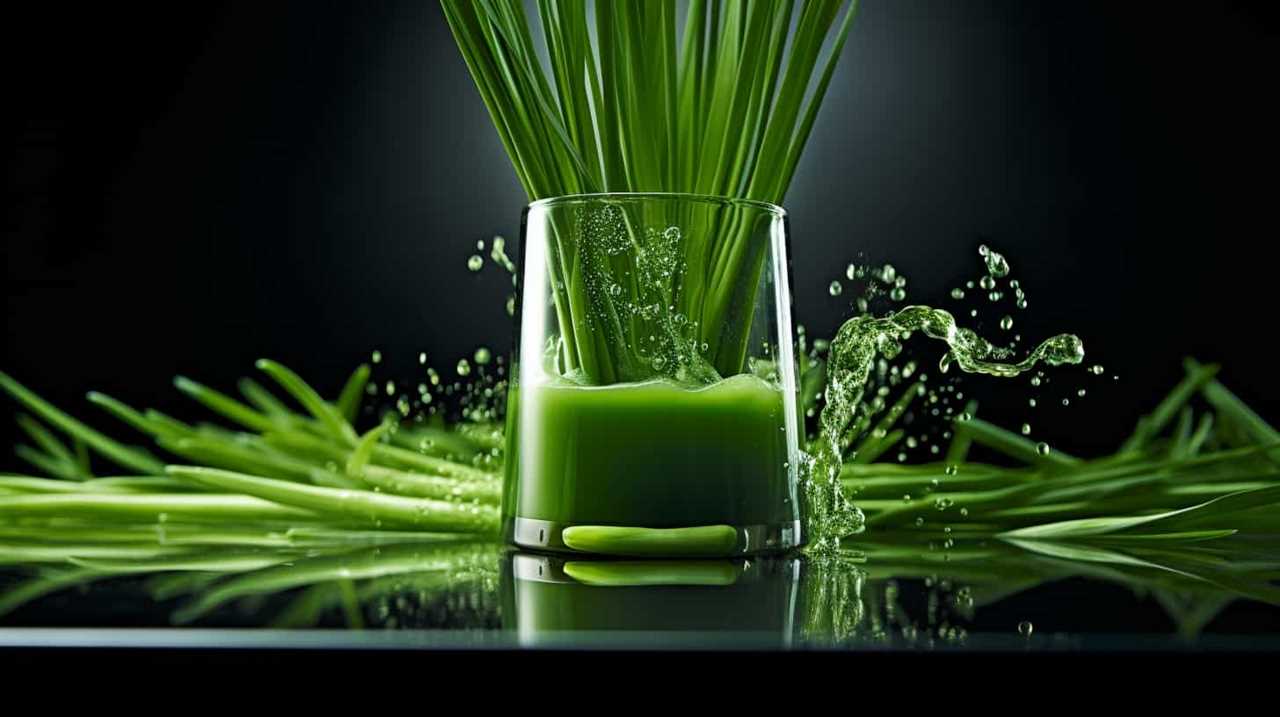
Now, let’s move on to discuss the texture changes in orange juice.
Texture Changes in Orange Juice
As we explore the texture changes in orange juice, it’s important to note that certain factors can cause it to become thicker or develop sediment. One common texture change in orange juice is pulp separation, where the pulp separates from the liquid and settles at the bottom. This can occur naturally over time, as the pulp particles become denser and sink.
Another factor that can affect the texture of orange juice is the expiration date. As orange juice ages, it may start to develop a thicker consistency and even form sediment. This is a result of the natural breakdown of the juice’s components. Therefore, it’s crucial to check the expiration date on orange juice and consume it before it reaches its expiration date to avoid any undesirable texture changes.
Mold or Growth in Orange Juice
We need to be aware of the possibility of mold or other growth occurring in orange juice. Mold can develop in orange juice if it isn’t stored properly or if it has passed its expiration date.

To prevent mold growth, it’s important to follow these steps:
- Store orange juice in the refrigerator at a temperature below 40°F (4°C).
- Check the expiration date on the bottle before consuming. Discard any orange juice that has expired.
- Keep the container tightly sealed to prevent air and moisture from entering, as these can promote mold growth.
Regularly inspecting orange juice for any signs of mold or unusual growth is essential. If you notice any discoloration, a strange odor, or visible mold, it’s best to discard the juice to avoid any potential health risks.
Frequently Asked Questions
Can Orange Juice Go Bad if It’s Stored in the Freezer for Too Long?
Frozen orange juice can potentially lose its nutrients and change its taste if stored in the freezer for too long. It is important to check for signs of spoilage before consuming it.
How Long Can Orange Juice Stay Fresh in the Refrigerator Once It’s Opened?
Once opened, orange juice can stay fresh in the refrigerator for about 7-10 days. To maintain its freshness, store it properly by keeping it tightly sealed and at a consistently cold temperature. If the orange juice develops an off odor, flavor, or appearance, it’s best to discard it to avoid any potential health risks. Factors like exposure to air and varying temperatures can influence how long orange juice lasts, so it’s crucial to handle it with care. Always check the expiration date as a general guide, but remember that proper storage can extend its freshness slightly. Additionally, avoid leaving the orange juice out at room temperature for extended periods, as this can significantly shorten how long orange juice lasts. Freezing the juice can be another option to extend its shelf life, but be aware that this may alter its texture and taste once thawed. By following these precautions, you can ensure your orange juice stays fresh and safe to consume.
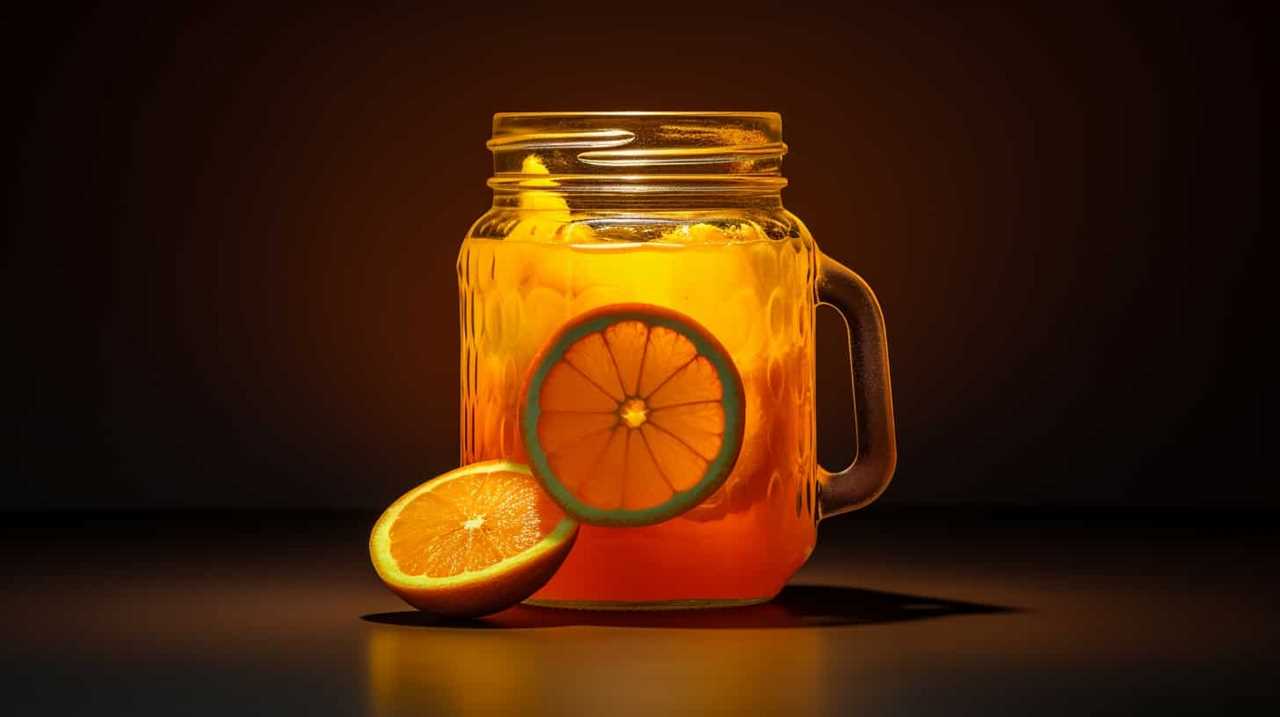
Is It Safe to Consume Orange Juice That Has Been Left Out at Room Temperature Overnight?
Left out orange juice may not be safe to drink as it can harbor harmful bacteria. Signs of spoiled orange juice include a sour smell, mold growth, and a change in color or taste.
Can Orange Juice Develop Harmful Bacteria if It’s Past Its Expiration Date but Still Looks and Smells Fine?
Orange juice can cause food poisoning if it develops harmful bacteria, even if it looks and smells fine. Signs of spoiled orange juice include a sour smell, mold growth, and a change in color or taste.
Does the Nutritional Value of Orange Juice Decrease as It Starts to Go Bad?
As orange juice goes bad, its nutritional value decreases. The longer it sits on the shelf, the more nutrients it loses. Signs of spoilage include a sour smell, off taste, and mold growth.
Conclusion
In conclusion, determining if orange juice is bad requires careful observation of color changes, strange smells, off taste, and texture changes. Just like a detective investigating a case, we must rely on our senses to detect any signs of spoilage.
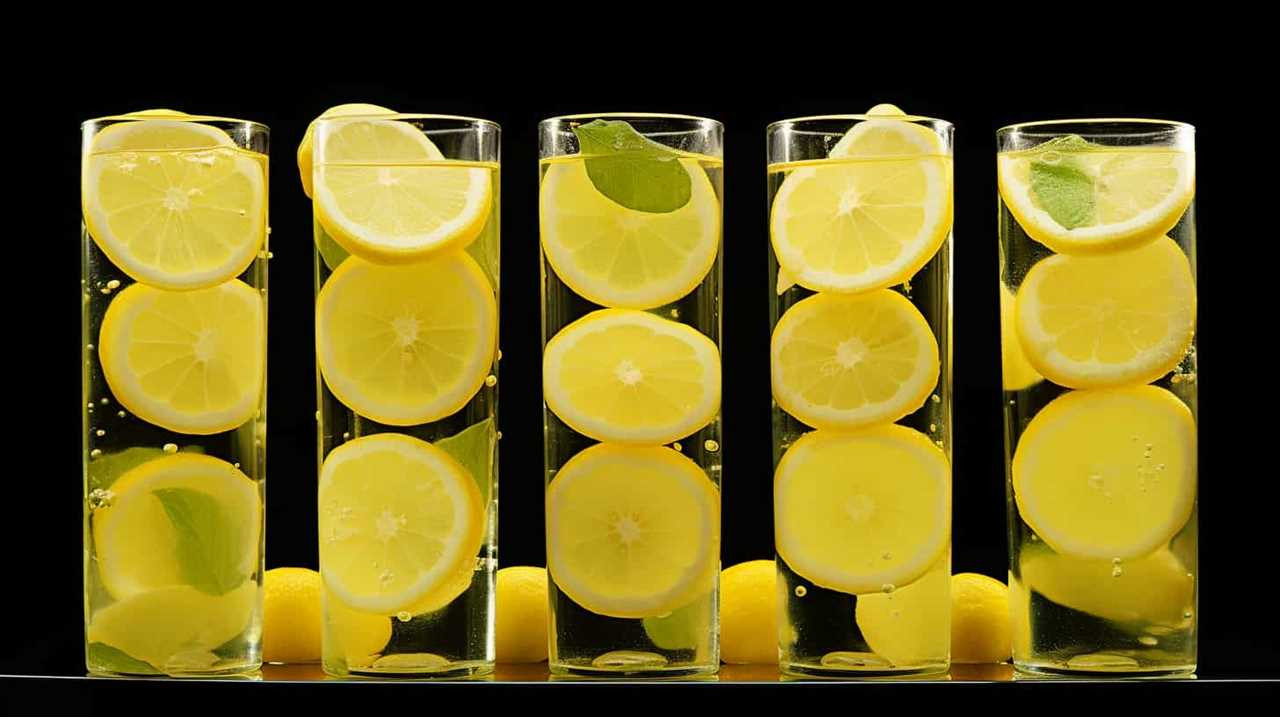
If we detect mold or growth in the orange juice, it’s a clear indication that it’s no longer safe to consume. By remaining vigilant and attuned to these indicators, we can ensure that our orange juice is always fresh and enjoyable.
Susannah expertise lies in researching and compiling evidence-based content on juicing, nutrition, and overall health. She is committed to ensuring that The Juicery World offers accurate, up-to-date, and trustworthy information to empower readers to take control of their health. Susannah’s goal is to inspire individuals to embrace juicing as a way to nourish their bodies and live their best lives.
-

 Vetted2 months ago
Vetted2 months ago15 Best Juices for Diabetics: Refreshing Options That Won’t Spike Your Blood Sugar
-

 Vetted2 months ago
Vetted2 months ago15 Best Decaf Coffee Options for Flavor Lovers Who Need a Caffeine Break
-

 Vetted2 months ago
Vetted2 months ago15 Best Espresso Ground Coffees to Elevate Your Morning Brew
-

 Vetted2 months ago
Vetted2 months ago15 Best K-Cup Coffee Pods for a Perfect Brew Every Time
-

 Vetted2 months ago
Vetted2 months ago15 Best Beans for Espresso: A Guide to Perfecting Your Brew
-

 Vetted2 months ago
Vetted2 months ago15 Best Kona Coffees to Savor the Rich Flavors of Hawaii
-

 Vetted2 months ago
Vetted2 months ago15 Best Inexpensive Espresso Machines That Brew Quality Coffee on a Budget
-

 Vetted2 months ago
Vetted2 months ago15 Best Cold Brew Coffees to Keep You Refreshed All Summer Long





